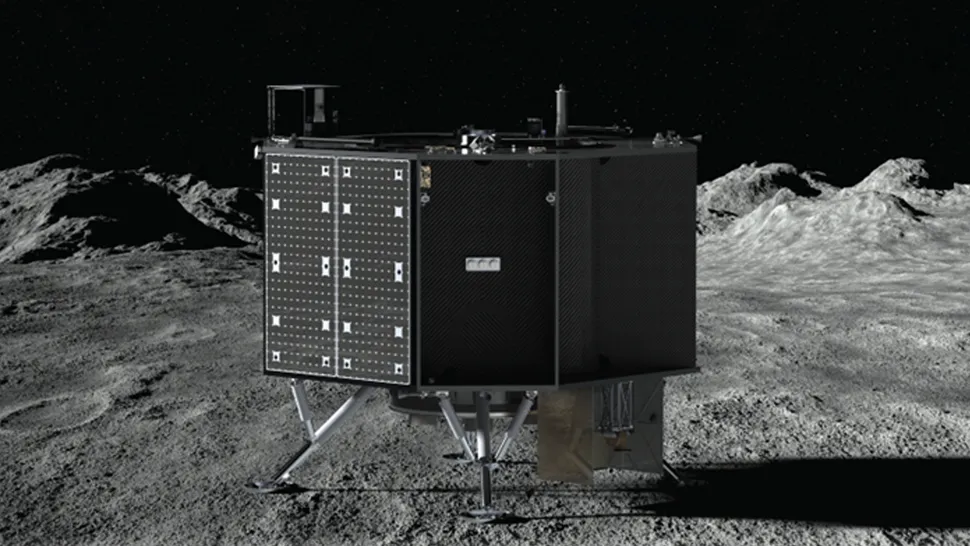NASA announced Thursday (July 21) it will task a team led by Draper to carry a suite of science and technology payloads to Schrödinger Crater(opens in new tab), an impact basin on the moon's far side. Touchdown of the Draper SERIES-2 lander is scheduled for 2025.
The $73 million Commercial Lunar Payload Services (CLPS) contract, if successfully executed, will represent the first time NASA science has touched down on the far side of the moon. (This is the eighth CLPS contract announced so far and also, the first CLPS mission to target the far side.)
 |
| An illustration of Draper’s SERIES-2 lunar lander, scheduled to send science and technology payloads to the moon for NASA in 2025. (Image credit: Draper) |
Only one country has successfully
completed a mission on the moon's far side, and relatively recently:
China's Chang'e k4 lander carrying the Yutu 2 rover arrived
in Von Kármán Crater on Jan. 2, 2019. Complexities in landing on the far side
of the moon arise because this side is out of direct radio communication
with Earth, which means that all information must be beamed to our planet
through satellite relay.
NASA said the uncrewed far-side
mission will gather science in a region very different from the crewed Artemis
lunar missions, allowing for valuable context. (Astronauts will instead work in
the south pole region on the near side of the moon.)
“Understanding geophysical
activity on the far side of the moon will give us a deeper understanding of our
solar system, and provide information to help us prepare for Artemis astronaut
missions to the lunar surface," Joel Kearns, deputy associate
administrator for exploration in NASA's science mission directorate in
Washington, said in the agency statement.
CLPS is an agency program that
aims to study the moon's history and environment using privately
developed landers and rovers that carry experiments and equipment to and on the
lunar surface.
Draper's lander design is based
on work by a U.S. subsidiary of Tokyo-based ispace, which unveiled
the Series 2 robotic moon lander in 2021. To stay in touch with
Earth, Draper's statement(opens in new tab) said the company plans to
contract Blue Canyon Technologies for two satellites that will be deployed just
before landing.
Advanced Space, the operator of
the lunar CAPSTONE mission currently making its way to the moon, will
"support the team in the mission planning and operations of the
satellites," the statement added.
The lunar science payloads Draper
will ferry, selected in 2019 and 2021, include three packages to
probe Schrödinger crater.
One package is the Farside
Seismic Suite (FSS), which will bear two seismometers to measure moonquakes —
allowing scientists to learn how often the far side is hit by small
meteoroids.
The Lunar Interior Temperature
and Materials Suite (LITMS) will examine how the moon's interior may conduct
heat and electricity, while the Lunar Surface ElectroMagnetics Experiment
(LuSEE) will look for the electrostatic properties behind strange "dancing
dust" on the moon's surface. LuSEE will also examine how the solar wind,
or constant stream of charged particles from the sun, interface with the lunar
surface and magnetic fields, among other investigations.
Artemis seeks to land humans on
the moon no earlier than 2025 to perform crewed science. The program's first
uncrewed test mission, Artemis 1, may launch as soon as Aug. 29 as
the team continues working through tasks from a "wet dress rehearsal"
launch test earlier in the year.
Comments
Post a Comment